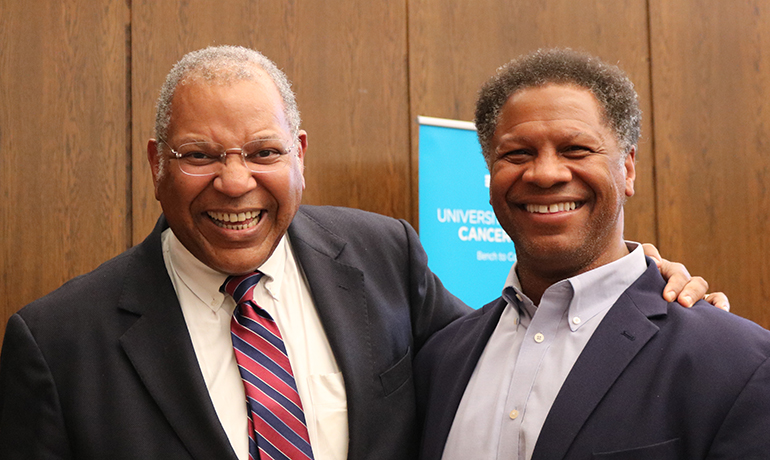

Cancer was a rare disease in the 18th and 19th Centuries. Not so today.
The American Cancer Society estimates that nearly 1.8 million Americans will be diagnosed with cancer in 2019, with about 607,000 dying from the disease this year. Having been the former chief medical and scientific officer at the ACS, Otis Brawley knows the statistics. The current Bloomberg Distinguished Professor at Johns Hopkins University discussed how the disease can be controlled in the 21st Century during the Distinguished Lecture Series presentation at the University of Illinois Cancer Center.
Cancer was first described on a papyrus dating back to 1600 BCE (Before Common Era) that was discovered in 1862 by Edwin Smith, an American dealer and collector of antiquities. In ancient Egyptian hieroglyphic, it describes cancer as a “tumor against the god Xenus.” It went on to say that there is no treatment.
But there have been many advancements in diagnosing the disease throughout the years, said Brawley, MD, MACAP, FASCO, FACE, a noted authority on cancer screening and prevention. X-rays in the 1890s; mammograms in the 1950s; ultrasound in the 1960s; computerized tomography (CT) in the 1970s; magnetic resonance imaging (MRI) in the 1980s; PSA (prostate-specific antigen) test in the 1980s; and stereotactic biopsy in the 2000s to the present.
During his presentation, Brawley examined the benefits and detriments of cancer screenings, and reflected on the ever-evolving cancer field; mortality trends; economics of healthcare and the future of healthcare. He also discussed race and disparities, among other topics. Dr. Brawley’s entire presentation can be viewed here.
